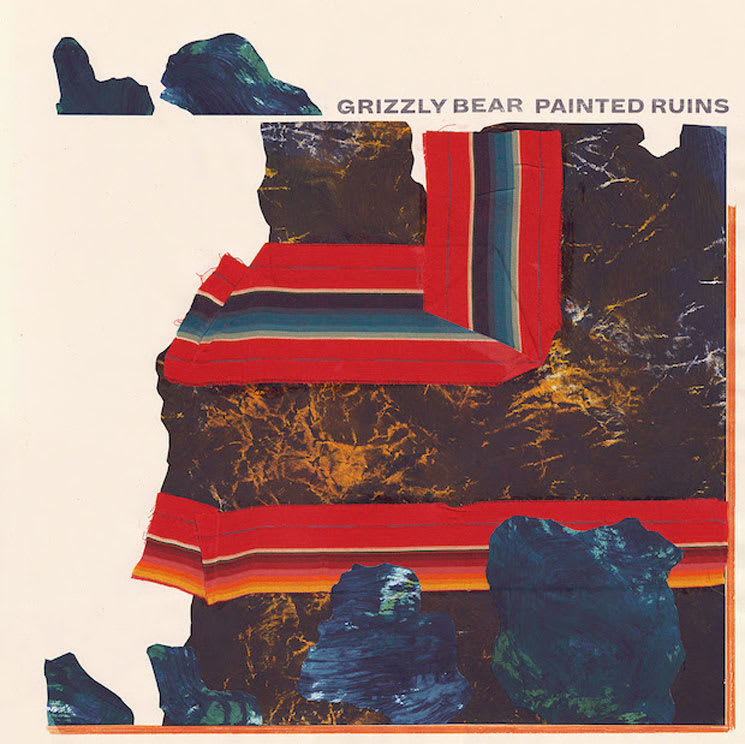It's never been easy to describe a Grizzly Bear album. The quartet of Brooklyn expats repeatedly earned critical acclaim for their rock soundscapes, a series of traditionally built songs buried underneath scores of dense instrumentation and experimentation, each denser than the last — until now.
Painted Ruins, Grizzly Bear's fourth LP since expanding from vocalist Ed Droste's solo project to a proper band, marks their leanest effort since 2006's full-band debut Yellow House. Trading in Yellow House's strong folk leanings for the avant-rock the band practiced on the following records, Painted Ruins stands as Grizzly Bear's poppiest record, though not at the expense of the band's trademark orchestral whirlwind and deliberately obscured and abstracted messages.
Not that there needs to be an easy explanation to enjoy it. Sure, you can grasp at straws and connect some easy dots (recurring lyrical themes about regret and disconnection to Droste's recent divorce, for example) but Painted Ruins is best enjoyed when you let each song carry you through its many twists and turns.
And are there ever twists and turns. The record's relatively pared-down sound makes it easier to pick out sonic narratives, such as new experiments in Chris Bear's drumming, which here dabbles in boom-bap and Krautrock. Multi-instrumentalist/producer Chris Taylor's influence, honed through his solo project CANT, is more prominent than on previous records — he takes the mic for his first lead vocal turn on "Systole," and his airy tenor fits seamlessly in the band's expansive sonic repertoire.
Meanwhile, his in-studio leadership, having served as the band's producer since joining the project in 2005, has led to Grizzly Bear's most inviting record, despite the layer of paranoia that coats the surface. The newfound space makes it easier than ever to unpack and explore the band's myriad textures, and to appreciate their unorthodox assembly.
Vocalist/instrumentalist Daniel Rossen all but spells out Painted Ruins' appeal during "Four Cypresses": "It's chaos, but it works."
(RCA)Painted Ruins, Grizzly Bear's fourth LP since expanding from vocalist Ed Droste's solo project to a proper band, marks their leanest effort since 2006's full-band debut Yellow House. Trading in Yellow House's strong folk leanings for the avant-rock the band practiced on the following records, Painted Ruins stands as Grizzly Bear's poppiest record, though not at the expense of the band's trademark orchestral whirlwind and deliberately obscured and abstracted messages.
Not that there needs to be an easy explanation to enjoy it. Sure, you can grasp at straws and connect some easy dots (recurring lyrical themes about regret and disconnection to Droste's recent divorce, for example) but Painted Ruins is best enjoyed when you let each song carry you through its many twists and turns.
And are there ever twists and turns. The record's relatively pared-down sound makes it easier to pick out sonic narratives, such as new experiments in Chris Bear's drumming, which here dabbles in boom-bap and Krautrock. Multi-instrumentalist/producer Chris Taylor's influence, honed through his solo project CANT, is more prominent than on previous records — he takes the mic for his first lead vocal turn on "Systole," and his airy tenor fits seamlessly in the band's expansive sonic repertoire.
Meanwhile, his in-studio leadership, having served as the band's producer since joining the project in 2005, has led to Grizzly Bear's most inviting record, despite the layer of paranoia that coats the surface. The newfound space makes it easier than ever to unpack and explore the band's myriad textures, and to appreciate their unorthodox assembly.
Vocalist/instrumentalist Daniel Rossen all but spells out Painted Ruins' appeal during "Four Cypresses": "It's chaos, but it works."
